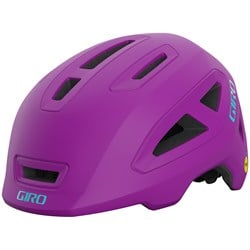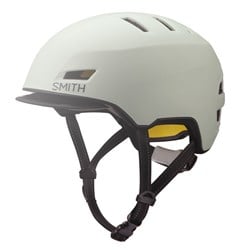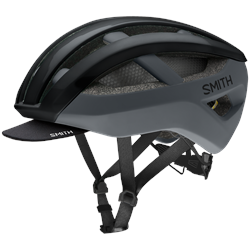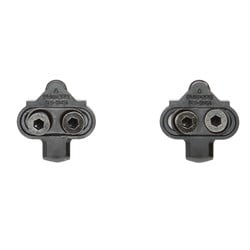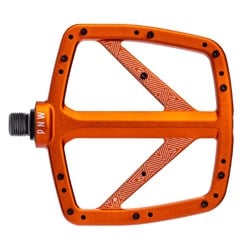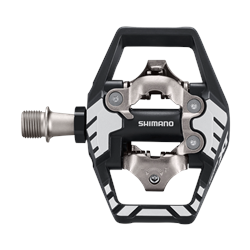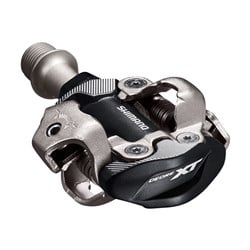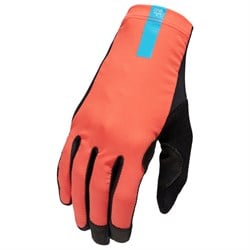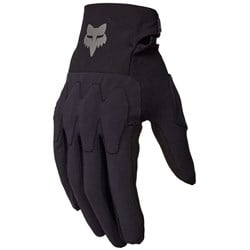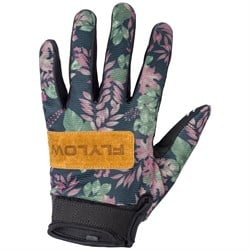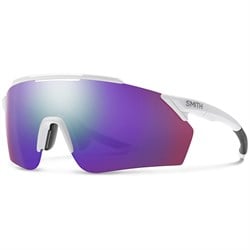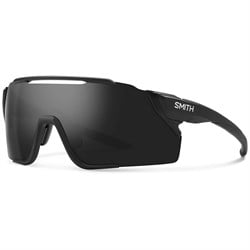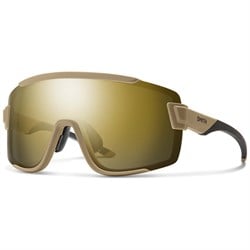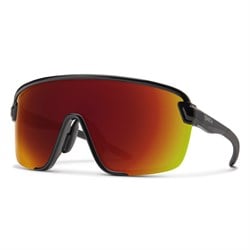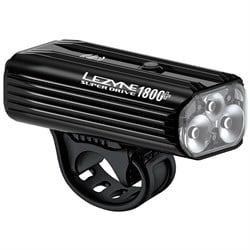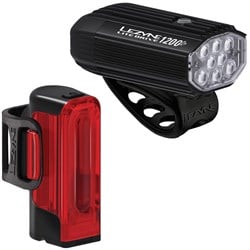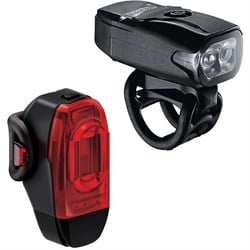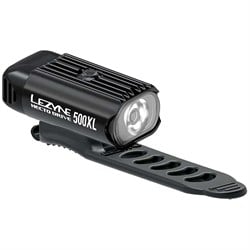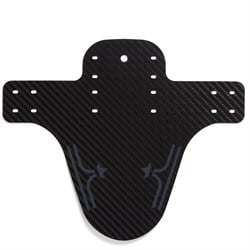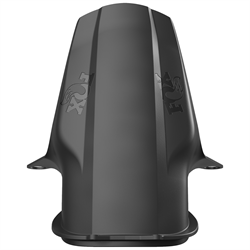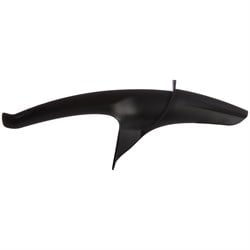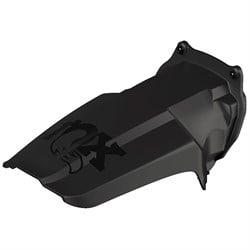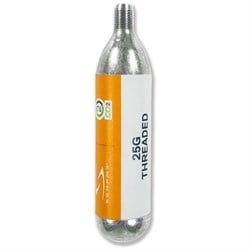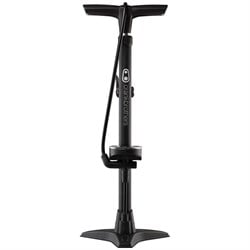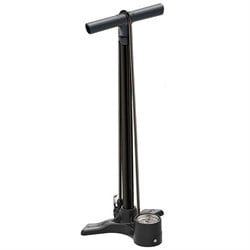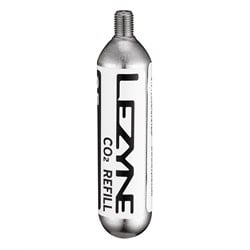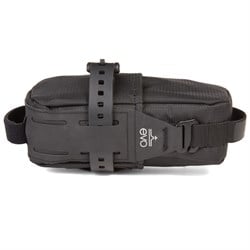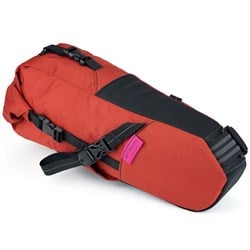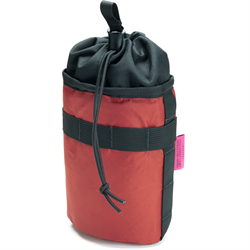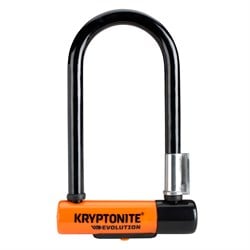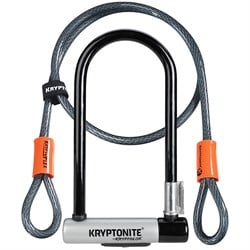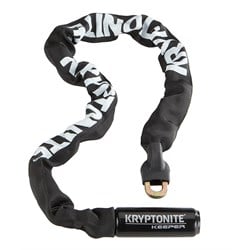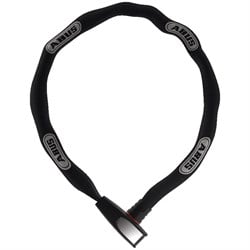How to Choose Bike Accessories
There are lots of “extras” that will make your cycling experience more comfortable and safer. With the exception of a helmet, whether or not you choose to invest in things like lights, fenders, racks and locks will depend on where, how often you ride and where you plan to keep your bike. Here are some accessories you may be interested in:
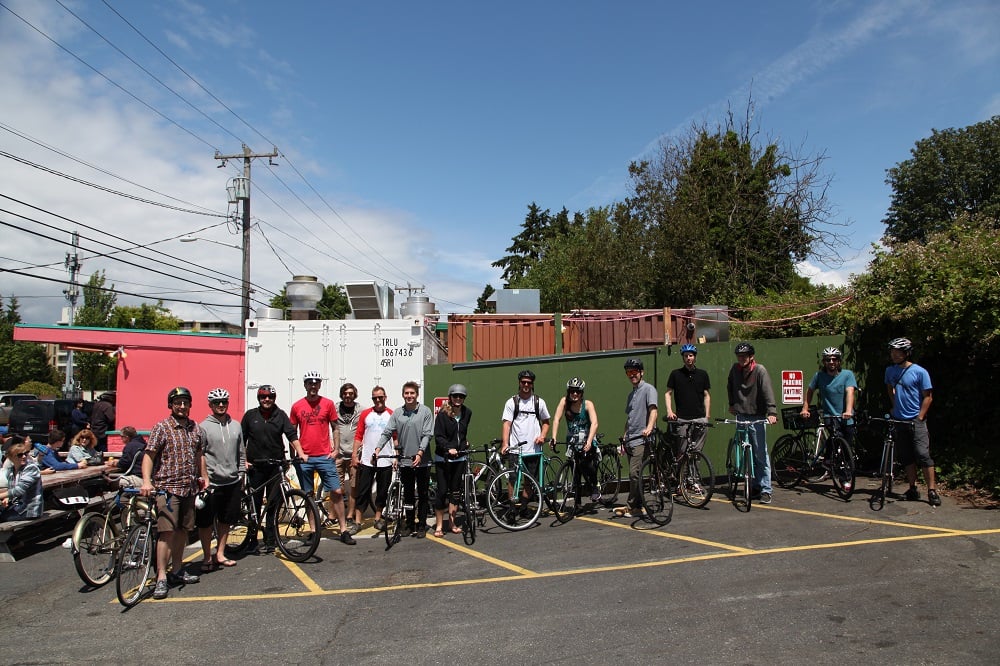 evo Crew x Traitor Cuban Pork Sandwich Outing
evo Crew x Traitor Cuban Pork Sandwich Outing
Helmets
We recommend putting a helmet on every time you get on a bike. There’s a reason seasoned riders use these things – even the most skilled of cyclists sometimes fall. Bike helmets can be categorized as either hard shell or in-mold types.
Hardshell helmets
Hardshell helmets have a thicker polycarbonate shell and a separate foam liner (usually expanded polystyrene). These helmets are durable and good at resisting multiple impacts. Some hardshell helmets have optional winter liners which let you use the helmet for skiing or snowboarding.
In-Mold helmets
In-Mold helmets have a very thin heat-formed outer shell which is filled with foam in the molding process. These helmets are generally lighter and can have better venting, but are somewhat more fragile.
The fit of bike helmets varies from model to model; the best way to choose is to try several on. You can often fine-tune the fit of a helmet using either Velcro tabs or a dial adjuster in the rear of the helmet. The number and positioning of vents also varies; more expensive models usually feature more aggressive venting but don’t necessarily protect you better than cheaper ones. Straps can normally be adjusted both for tightness and fit around your ears; the chin strap should be tight enough that the helmet can’t come off during a fall.
Pedals
Pedals aren’t exactly an accessory, since it’s hard to get far on your bike without them, but higher end bikes are increasingly sold without them. Why? Manufacturers believe serious cyclists will want to choose their own pedal/shoe system and will probably throw away the pedals that come on the bike. Most pedals will fit most cranks (the part that connects the pedal to the frame) but the range of options is huge.
Platform Pedals
Platform Pedals are popular with people who take their feet off the pedals a lot, like downhill mountain bikers, BMX’ers and stop-and-go city riders. You can add efficiency and security to platform pedals by attaching toe clips and straps.
Clipless Pedals
Counterintuitively, clipless pedals use a mechanical attachment between your shoe and the pedal (the term "clipless" refers to the lack of a toe clip), and come in mountain and road models (don’t take the designations too seriously, the mountain versions are often the best choice for city riding). Mountain pedals use a shoe with lugged soles and a recessed cleat that enables walking, while road pedals use lighter smooth soles and a cleat that protrudes from the shoe sole. Clipless systems connect you solidly to the pedal and release when you twist your foot; many styles offer some degree of lateral “float” which can be great for those with knee problems. There are also some pedals that combine a platform on one side and a clip on the other.
Clipless systems are usually referred to by the company that developed the system - Shimano, Crank Brothers, Time, and Speed Play are common – and the proper cleat comes with the pedals when you buy them. Check to make sure the cleat is compatible with the shoe you like. If you are new to clipless pedals, be prepared for a short but steep learning curve - practice getting in and out with your bike on a trainer or in an empty parking lot before you head out in traffic.
Gloves
Bike gloves can increase your comfort if you ride a lot and will also save your hands if you happen to fall. They are usually fingerless and padded in the palms, and are made with breathable Spandex or mesh backs that allow good ventilation. If you ride in cold or wet weather, look for full-fingered gloves with light insulation.
Glasses
Protective eyewear can be a huge help in keeping insects, dust and pollen out of your eyes and offers sun protection when it’s bright. Look for models that fit well with your helmet (take it when you try them on) and fit closely enough for full protection without cutting off all ventilation - they’ll fog in cool weather if there’s not enough air circulation. If you ride in a variety of light conditions, look for a model that allows you to swap lenses.
Lights
If you ride in transitional light or at night, make sure you have good front and rear lights. Flashing and/or moving LED rear lights (more than one if possible) make you much more visible to drivers, even in daylight. Almost all bike headlights use LEDs (Light Emitting Diodes) these days – Halogen and HID bulbs have fallen out of favor as LED development has made possible lights that are just as bright, run much cooler, and are virtually unbreakable. When choosing a light, consider how much light you need. The darker and more unpredictable the conditions, the more light you’ll want. If most of your night riding is done in a well-lit urban setting, you may not need much help seeing where you’re going but will still want lights to make you more visible. If you ride in areas without street lights you’ll want more illumination. As you might expect, brighter systems usually cost more.
Battery Systems
Battery systems vary by brightness, battery type, run time, and mounting method. Some smaller lights operate on regular AA or AAA alkaline batteries or round-shaped watch batteries, while more expensive systems designed for everyday use offer rechargeable batteries. Most newer rechargeable systems utilize Lithium-Ion (Li-Ion) batteries because of their smaller size and stable power output. Charging systems use either an AC adaptor from a wall outlet or USB cable from a computer or other USB-equipped device.
- Brightness
- There’s a huge range of brightness in bike lights. Some are basically a pen light with a mounting band while others put out more light than a nice car. Brightness is measured in lumens, the higher the number the brighter the light. Testing methods aren’t consistent, so it’s hard to compare makes or models using lumen ratings, but think about how and where you’ll use the light. If you’re riding singletrack at speed in pitch darkness, no amount of light is going to be too much, go for the 2,000+ lumen monster. For most people riding their bike to work and back, 500 to 1,000 lumens is probably plenty. If you’re just trying to get the attention of cars and pedestrians in front of you, 100 to 200 lumens may be fine. If in doubt, a little extra illumination can’t hurt, since most lights have two or three different brightness modes you can always turn down if needed.
- Runtime
- Runtime is how long the light will work on a full battery charge. It varies depending on the brightness setting your choose, but try to calculate how long you’ll typically use the light and give yourself some leeway. If more than one battery option is available, you can check relative battery output by comparing their ratings in amp-hours (Ah). This is a linear scale, so a battery rated at 8 Ah should power a light for twice as long as a battery rated at 4 Ah. Think about how often you intend to use the light, and how long you’ll need it each ride – if you use the light daily, carry a spare battery or figure out a charging pattern that works for your setup and riding habits.
- Headlight Mounting
- Headlights can be mounted either to your handlebars or your helmet, and both have their advantages. With a bar mount system, the lights and battery stay with the bike, so you aren’t carrying your lighting system around while you’re shopping for groceries. On the other hand, a bar and frame mounted system is vulnerable to theft when your bike is parked. A helmet mount system allows you to scan the roadway for possible danger and direct the beam at people who may not otherwise notice you. Some people do one of each.
- Rear Light Mounting
- Rear lights are normally small LED units that can be mounted to your frame or seatpost or clipped to your belt, back pocket or pack. They’re small and can be seen for a long way, especially in flashing or moving mode. It’s not a bad idea to use several LED rear flashers, mounted on both your bike and your body or backpack. Rear lights should be red in color; if you use a flashing LED on the front of your bike for visibility you should use a clear lens on it.
Fenders
If you ride in the rain, fenders make a huge difference. Not only do they keep water off your back, but off your shoes, which are usually the first things to soak through. Fenders are most commonly available in plastic and aluminum, with aluminum having an edge in durability but costing more. Make sure there is adequate clearance under your fork and around your brakes to mount the fender you choose. Some models mount directly to your seat post or frame tubes without much hardware, while some require removing the brakes and attaching a bracket under the calipers. Frames with cast or braze-on fittings for the fender supports are helpful in mounting fenders. To make your fenders even more effective, add “buddy flaps” (flexible extensions made of rubber or old plastic bottles) on the trailing ends – this will limit the spray hitting your shoes and riders in back of you.
Pumps & Inflators
Pumps come in many shapes and sizes, and you’ll need one if you get a flat away from home and want to continue your ride. Most portable pumps can either be attached to your bike’s frame or carried in a pack or messenger bag; floor pumps are larger, heavier and normally left at home but are ideal for keeping your tires inflated to full pressure on a regular basis.
Bike tires use two types of valves: Schrader valves are like the ones on a car tire and commonly found on lower price point and kids’ bikes, while Presta valves are thinner and lighter and found on higher end bikes (you must unscrew the tiny knurled end of a Presta valve before you can put air in). Valves are specific to rims, you’ll need to know which type you have when you buy a new tube. Most pumps will adapt to fit either type, but make sure the pump you’re getting will work with your valves. Mini pumps will put enough air in your repaired tire to get you home, but often won’t reach the full recommended tire pressure unless you’re super strong and patient. To achieve higher tire pressures easily, try a CO₂ inflator. Inflators use a compressed gas cartridge to inflate the tire, usually with a dial or lever to control the flow. A few pumps incorporate both manual and CO₂ inflation. (Note: If you use a CO₂ inflator, fill the tire gradually rather than releasing all the gas at once so the mechanism doesn’t freeze.)
To successfully fix a flat tire on the road, you’ll also need to carry a spare tube or patch kit, and tire levers. A fresh tube is recommended, since there’s no guarantee you’ll be able to find the leak in the damaged tube, but you can use the patch kit later at home and save the repaired tube for next time. Make sure you have the right tools to remove your wheels from the bike; some bikes have quick-release hubs which can be removed without tools, while others require a wrench or allen key. Tire levers are a must for removing or installing a tight-fitting tire with the rim. They come in sets of 2 or 3 and have a hook to hold them in place on a spoke.
Racks & Bags
If you tend to bike with more stuff than you can put in your pockets, you’ll want to consider racks and bags. Seat or saddle bags attach to the back of the saddle and/or seat post and come in a wide range of sizes. Small ones (less than .5 liter in volume) are perfect for emergency supplies like spare tubes, tire levers, CO₂ cartridges, power bars and first aid items. Larger saddle bags can mount either sideways or lengthwise in back of the seat tube, and often require some sort of rack as a support. Panniers are removable bags that ride lower on the bike, to the sides of the front or back wheels. They have the advantage of lowering the load center of gravity and not affecting the handling of your bike as much as other carry methods but require specific racks. If you don’t need to carry much, think about a small backpack or messenger bag.
If you use your bike for shopping, there are carriers for six-packs, growlers and groceries that attach to the top tube or handlebars of your bike – we recommend riding home with the beer before drinking it, though.
Locking Your Bike
Leaving your bike outside sucks, but sometimes it’s necessary. Bike locks we sell are either cable or “U” lock styles, and both have their advantages. You also have a choice of combination or key lock mechanisms. No lock is unbreakable, but a good quality U-Lock that fits the frame and wheel tightly so it’s hard to get a crowbar inside definitely makes it harder for someone to steal your bike. A cable lock is softer, lighter and easier to carry but can be more easily cut with bolt cutters. If you use a simple cable or chain to lock your bike, make sure the lock you choose is of equal quality. Some riders use two locks in sketchy areas (U-lock through the rear wheel and frame, Cable lock through the front tire and frame) with the intent of slowing thieves down enough for someone to notice – chances are they’ll pick an easier bike to steal. Bike locks are available in either key or combination versions, and each has its advantages. Key locks are generally slightly more robust, but most thieves simply break or cut the lock rather than trying to “open” it regardless of mechanism type, so take your pick. Make sure the rack or pole you lock your bike to is solidly anchored and keep in mind that a knowledgeable thief with a 5mm Allen wrench can remove hundreds of dollars of components from your bike in a few seconds.
Other Accessories
Bells are nice retro add-ons that gently announce your presence to other riders (instead of bellowing “on your left” at the top of your lungs). A Water Bottle and Cage that mount securely to your frame is almost a necessity if you ride more than a few miles at a time.
That's it! Now that you have tricked out your bike like Xzibit, all you need to do is go for a ride. Have fun and ride safe!
Need a tune up? Bring your bike in for maintenance at any of our flagship locations for assistance:
This is evo. We are a ski, snowboard, wake, skate, bike, surf, camp, and clothing online retailer with physical stores in Seattle, Portland, Denver, Salt Lake City, Whistler, and Snoqualmie Pass. Our goal is to provide you with great information to make both your purchase and upkeep easy.
evo also likes to travel to remote places across the globe in search of world-class powder turns, epic waves, or legendary mountain biking locations through evoTrip Adventure Travel Trips. Or, if you prefer to travel on your own, check out our ski & snowboard resort travel guides and mountain bike trail guides.
Still have questions? Please call our customer care team at 1.866.386.1590 during Customer Care Hours. They can help you find the right setup to fit your needs.
